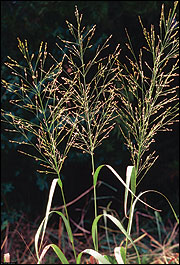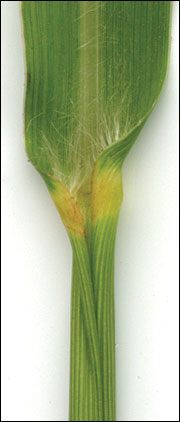Switch grass
- Panicum virgatum
Grass
Many switch grass varieties exceed five feet in height.
Scott Sudkamp, Missouri Department of Conservation
Description
Switch grass is a native panic grass, but it tends to grow taller than most others and exhibits an upright, bunchy growth form. The leaves twist in a corkscrew-like pattern from the base to the tip of the blade. Native ecotypes on prairies rarely exceed 4 feet, but commonly used varieties, such as Cave-in-Rock and Kanlow, may grow more than 6 feet tall.
Use by bobwhites
As with other panic grasses, bobwhites may consume switch grass seeds, though they tend to be a minor part of the diet. Of greater benefit are the nesting and brooding opportunities switch grass provides with its bunchy growth and spreading canopy. Switch grass is among the stiffest-stemmed of Midwest grasses, allowing the plant to stand up to winter weather, thus providing thermal cover. Dense stands may also serve as escape cover.
Switch grass often dominates warm-season grass mixes in the first several years but eventually settles down to a codominant or subdominant role. Monocultures die out after 12-15 years, so it is important to plant switch grass with other native warm-season grasses where permanent cover is necessary. Native ecotypes should be used when available, as they tend to be shorter and less aggressive in mixed-grass communities.










